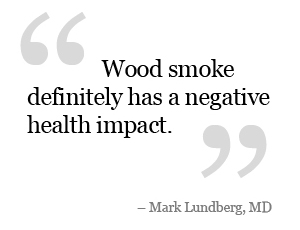More Evidence that “Clean” Wood Burning Isn’t Clean
 In an effort to reduce air pollution from wood burning, government agencies worldwide have used public funds to subsidize supposedly cleaner burning devices, such as EPA certified wood stoves.
In an effort to reduce air pollution from wood burning, government agencies worldwide have used public funds to subsidize supposedly cleaner burning devices, such as EPA certified wood stoves.
Replacing old wood stove technology with newer wood stove technology is often touted as the solution to wood smoke pollution, especially by those who manufacture and sell wood stoves. The results of these interventions has been consistently disappointing, and large wood stove changeout programs in Montana and Canada have not improved air quality as projected. Now, from Australia, comes a study that again shows the folly of subsidizing purportedly cleaner wood burning. In Perth, a town heavily impacted by wood smoke in Northern Tasmania, approximately 80% of the households were supplied with a commercially available catalytic device for their existing wood heater. The manufacturer of the device states that it reduces particle emissions from individual wood heaters by up to 54% in a laboratory setting.
The study measured fine particle pollution levels in Perth before and after the devices were provided.
The results? No significant changes in ambient PM2.5 concentrations were found. These results reflect, once again, the disconnect between lab results and real world results. They show that introducing new “less polluting” technology in the context of continued wood burning is not an effective way to reduce wood smoke.
What does work? The only interventions that have been shown to consistently reduce wood smoke pollution are those that convert households to other forms of heat that—no surprise—don’t involve burning wood.




